#naturalist painter
Explore tagged Tumblr posts
Text
Yedidya Hershberg

#Yedidya Hershberg#artist painter#original art#art#art work#art style#ilustration painter#art colors#woman’s art#art by women#womans world#naturalist painter#natural colours#mother nature#ooctoopussy#frank murdoff#xpuigc#xpuigc bloc
43 notes
·
View notes
Text
Malcolm T. Liepke

#malcolm t. liepke#artist painter#original art#art#art style#art work#ilustration painter#woman’s art#naturalist painter#oil on canvas#alfhild algotsson#frank murdoff#art colors#ooctoopussy#xpuigc#xpuigc bloc
40 notes
·
View notes
Photo
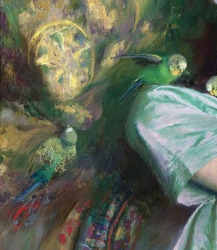
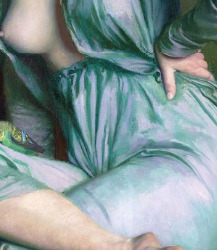
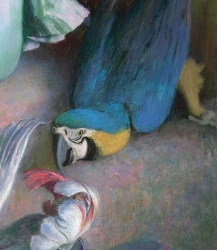
detail from The Familiar Birds, 1921 by Émile Friant
#Émile Friant#portrait#women in art#naturalism#naturalistic art#art#art detail#art details#20th century art#art history#french art#french painter#painting#oil painting#oil on canvas#birds in art
574 notes
·
View notes
Photo

APRIL!
#april#watercolor#painting#painting process#watercolor painting#art#illustration#wildlife#animals#nature#naturalist#phenology#owl#greathorned owl#porcupine#new england#maine#artist#illustrator#painter
186 notes
·
View notes
Photo

Orpheus’ Sorrow, 1876, Pascal Adolphe Jean Dagnan-Bouveret (1852-1929)
#orphey#mythology#Greek Mythology#mythological painting#Pascal Dagnan-Bouveret#academicism#french art#french artist#french painter#naturalist school#naturalism
233 notes
·
View notes
Text

Albrecht Dürer
The Great Piece of Turf
1503
Watercolor and gouache heighted with white, mounted on cardboard.
#albrecht dürer#german art#german artist#german painter#german painting#nature aesthetic#nature#botanical painting#botanical art#nature painting#flora#naturalist#aesthetic#beauty#natural aesthetic#art history#aesthetictumblr#tumblraesthetic#tumblrpic#tumblrpictures#tumblr art#tumblrstyle#artists on tumblr#modern art
41 notes
·
View notes
Text

Portrait of Alexander von Humboldt
Artist: Joseph Karl Stieler (German, 1781–1858)
Date: 1843
Medium: Oil on Canvas
Collection: Charlottenhof Palace, Prussian Palaces and Gardens Foundation Berlin-Brandenburg, Germany
Alexander von Humboldt
Friedrich Wilhelm Heinrich Alexander von Humboldt (14 September 1769 – 6 May 1859) was a German polymath, geographer, naturalist, explorer, and proponent of Romantic philosophy and science. He was the younger brother of the Prussian minister, philosopher, and linguist Wilhelm von Humboldt (1767–1835). Humboldt's quantitative work on botanical geography laid the foundation for the field of biogeography, while his advocacy of long-term systematic geophysical measurement pioneered modern geomagnetic and meteorological monitoring. Humboldt and Carl Ritter are both regarded as the founders of modern geography as they established it as an independent scientific discipline.
#portrait#seated#oil on canvas#man#joseph karl stieler#german painter#alexander von humboldt#german#geographer#naturalist#exploret#indoors#red chair#black suit#bookcase#books#botanical geographer#19th century painting#european art#history
5 notes
·
View notes
Text

Johannes Boesen (August 5, 1847 - 1916) was a Danish landscape painter in the tradition from Vilhelm Kyhn. He trained at the Academy, traveled abroad, exhibited at Charlottenborg and even sold to the Royal family, but by now he is largely forgotten as so many naturalist artists.
Above: Forest Scene with Road and Deer, 1878 - oil on canvas (Privately owned)
#art#danish painter#landscape painting#johannes boesen#1870s#oil on canvas#danish royal academy of fine arts#charlottenborg#forest scene#naturalist art#vilhelm kyhn
3 notes
·
View notes
Text

#digital art#art#artwork#digital painting#original art#clip studio paint#my art#painting#ms paint#painter#nature art#nature#naturalist#night#sky#space#watercolourpainting#watercolour art#watercolor#digital artist#oc artist#oc artwork
1 note
·
View note
Text






Selected Works from Henry Scott Tuke
Henry Scott Tuke was an English painter renowned for his maritime scenes and depictions of young men, often in a naturalistic and intimate style. There is something nostalgic about many of Tuke's works — his vibrant use of color and light perfectly captures the idyllic and carefree essence of youth.
In his personal and professional life, Tuke met and befriended many fellow artists such as John Singer Sargent, and talented poets, including Oscar Wilde and John Addington Symonds. He traveled often in circles with other Uranian — the term in use at the time for gay men — artists. While Tuke's art prominently features nude young men, his works aren't sexually explicit. Most of his works show young men in the foreground but the star is clearly the sea.
Tuke's legacy is celebrated for its artistic merit and its subtle challenge to the conventions of his time, particularly posthumously. Around the 1970s, his body of work was rediscovered by gay artists, art collectors, and art historians — including Sir Elton John!
You can find these works and more in our gallery!
884 notes
·
View notes
Text
Hells Yeah I love the light source u chose for this piece!! works real well with the eye glow. also really love the highlight u did on his sleeve garter I enjoy looking at it so much

@bacchuschucklefuck this was a really fun challenge, I loved figuring out the colors and details on him!
#not (my) art#Fuck With My Sketch#fwms for short. yes Im committing to this bc I think its funny#u also got a real strong sense of foreground and background! which means ur eye for 3d shapes is pretty good#it's fun to see u use pretty much the opposite style of coloring to the one I chose for this piece hehe. I'm really bad at#soft ''naturalistic'' coloring I like my colors saturated as fuck lmao. mostly just bc I don't really get how they work without making it#a constructed system... that's a painter thing I just dont have (and honestly have had limited success at training myself for so far)#I love the mood of this so much.... pensive but slow. speaking of a kind of inevitability that refuses to be jarring while it approaches
84 notes
·
View notes
Text
Fortunato Depero
March 30, 1892 – November 29, 1960
Ciociara
1919

#Fortunato Depero#March 30 1892 – November 29 1960#Ciociara#1919#artist painter#original art#art#art style#artwork#colors art#women in art#woman’s art#naturar color canvas & oil#naturalist painter#art colors#art gallery#watercolor art#art study#artistic#classic art#ooctoopussy#frank murdoff#xpuigc#xpuigc bloc
8 notes
·
View notes
Text
Malcolm T. Liepke
Contemporary American Painter
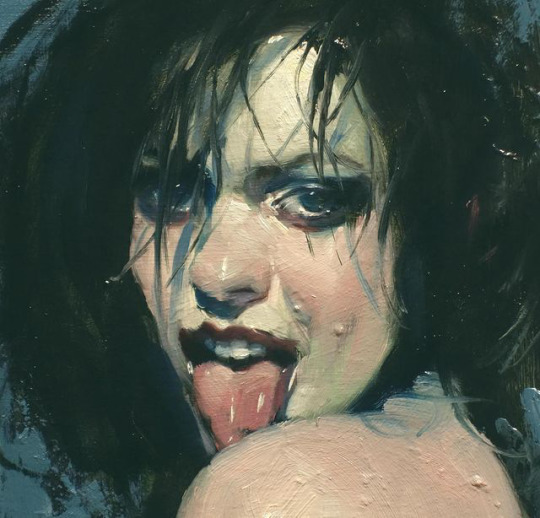

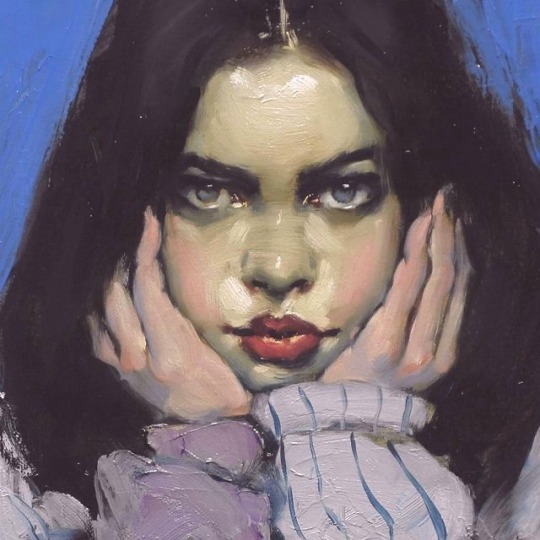
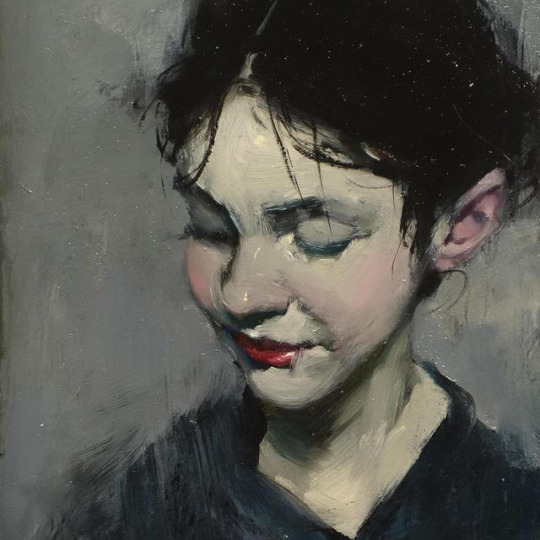
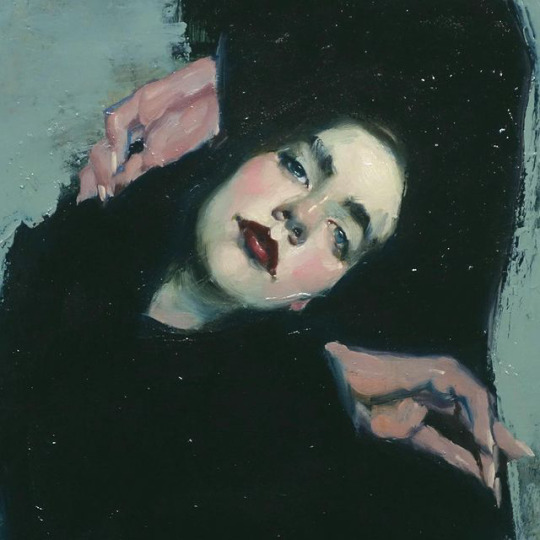
#malcolm t. liepke#Contemporary American Painter#artist painter#original art#art#woman’s art#art by women#art work#art style#art colors#american artist#american painter#watercolor colors#oil on cotton#oil and pigment on canvas#acrylic canvas#natural colours#nature colors#pastel colors#naturalist painter#frank murdoff#octopussi#xpuigc#xpuigc bloc
19 notes
·
View notes
Text




Self-portraits by Émile Friant (1863-1932). French naturalist painter. Musée des Beaux-Arts de Nancy, FR. oil on canvas
209 notes
·
View notes
Text

Magpies Roosting by Charles Tunnicliffe (1901-1989, UK).
An internationally renowned naturalistic painter of birds and other wildlife, Tunnicliffe spent most of his working life on the Isle of Anglesey, off the north-west coast of Wales.
54 notes
·
View notes
Photo

Black Figure Pottery
Black Figure Pottery is a type of Greek pottery named after the colour of the scenes painted on vessels. It was first produced in Corinth c. 700 BCE and then adopted by pottery painters in Attica, where it would become the dominant decorative style from 625 BCE. Athenian vases then dominated the Mediterranean pottery market for the next 150 years.
Besides Attica and Corinth, Laconia was a third, albeit minor, producer of the style in the first half of the 6th century BCE. The more than 20,000 surviving black figure vases and vessels of varied form make it possible not only to identify artists and studios, but they also provide the oldest and most diverse representations of Greek mythology, battle scenes, and religious, social, and sporting practices. The pottery vessels are also an important tool in determining the chronology of archaeological sites and the history of ancient Greece in general. The style was eventually replaced by red-figure pottery.
Development
Evolving from the earlier geometric designs on pottery, the black-figure technique depicted animals (more favoured in Corinth) and human silhouette figures (preferred by Athenian painters) in naturalistic detail. Before the firing process, a brilliant black pigment of potash, iron clay, and vinegar (as a fixative) was thickly applied to entire vases or part of the vessel. This black gloss also gave a slight relief effect. Parts of the painted area were then scraped away where not required, leaving a design in silhouette. Additional details such as muscles and hair were added to the figures using a sharp instrument to incise through the black to reveal the clay vessel beneath and by adding touches of red and white paint. Vessel borders and edges were often decorated with floral, lotus, and palmette designs.
Continue reading...
69 notes
·
View notes